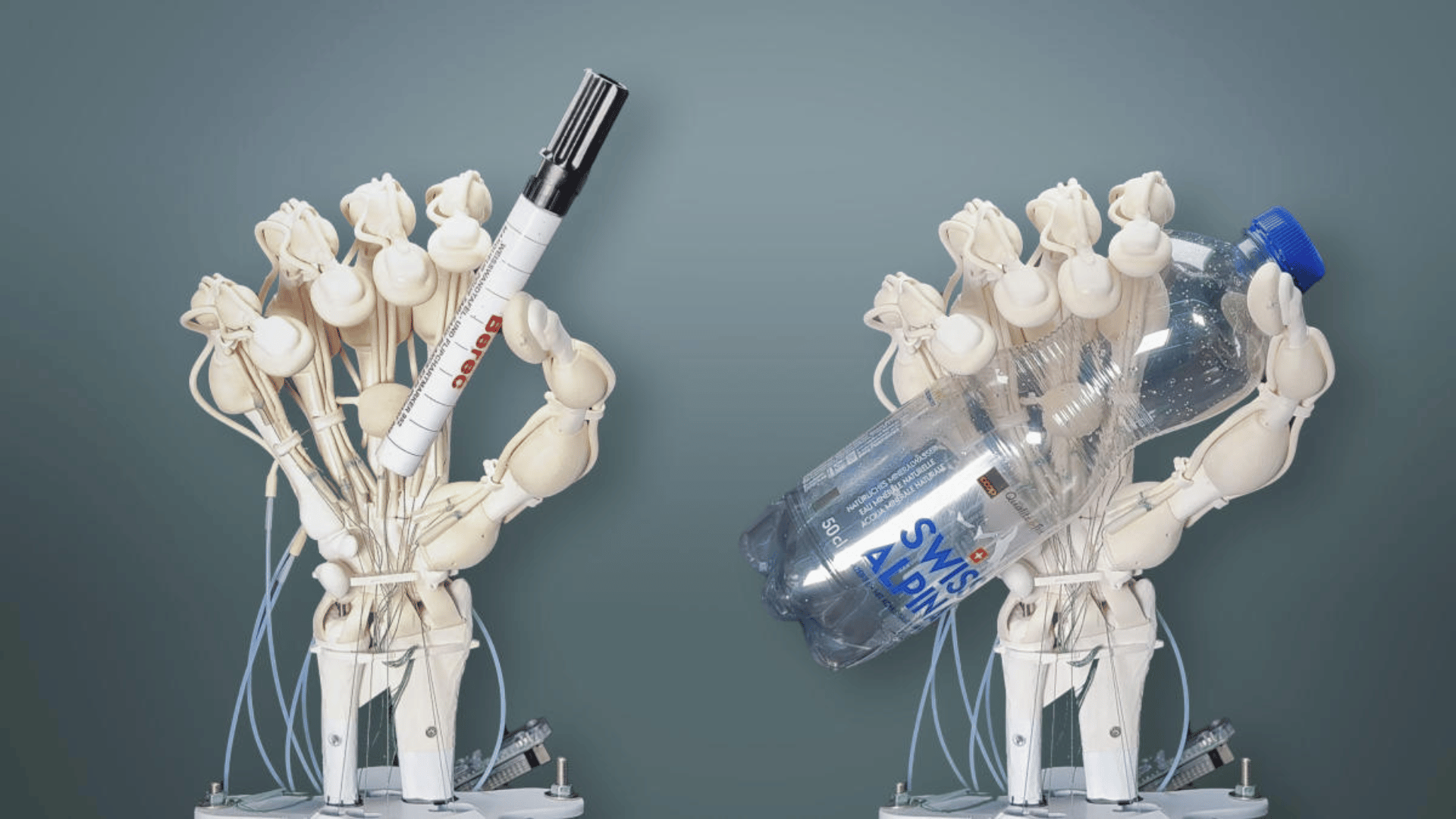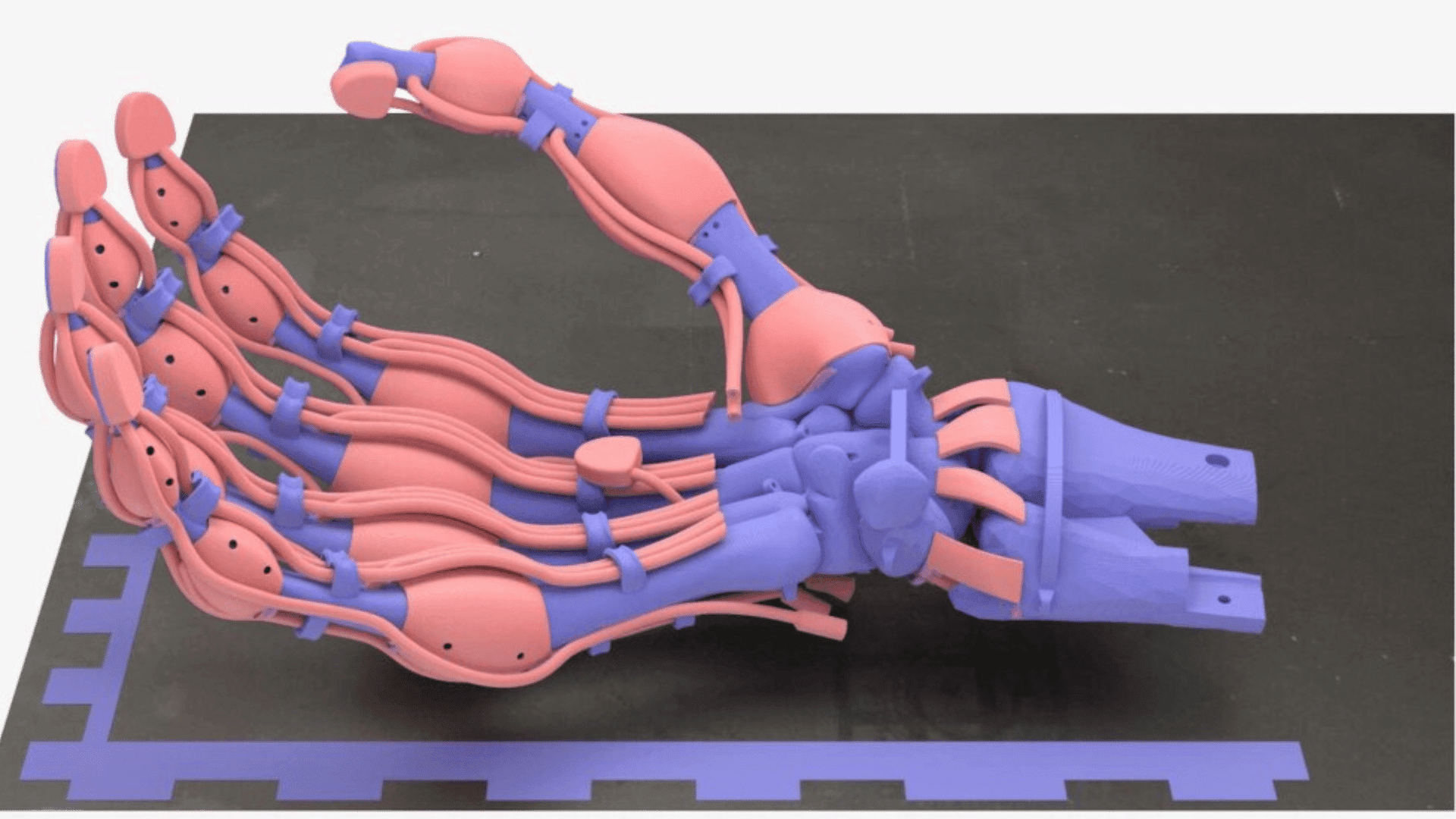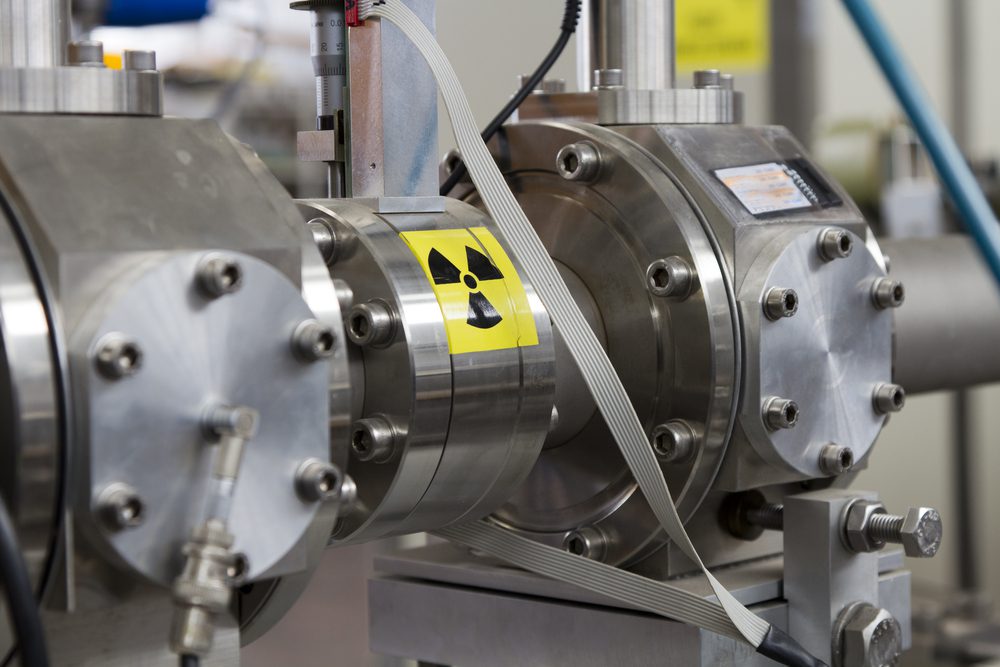For the first time, researchers printed a robotic hand with ligaments, bones, and tendons. The new technology could make it easier to print complex parts such as prosthetics.

Researchers at the Zurich-based ETH public university partnered with a US-based startup called Inkbit to print the robotic hand, which represents a huge leap forward in 3D printing technology.
The various parts of the hand were printed simultaneously rather than printed separately and combined afterward. The pieces were made from different polymers of varying softness and rigidity using a new laser-scanning technique that allows 3D printers to create “special plastics with elastic qualities” all at once.
Whereas the technology was previously reserved for fast-curing plastics, the team at Inkbit developed a special method to 3D print slow-curing plastics. The new creation has potential both in the field of prosthetics and any field that requires the production of soft robotic structures.
“We wouldn’t have been able to make this hand with the fast-curing polyacrylates we’ve been using in 3D printing so far,” stated Thomas Buchner, a doctoral student in the group of ETH Zurich robotics professor Robert Katzschmann and first author of the study. “We’re now using slow-curing thiolene polymers. These have very good elastic properties and return to their original state much faster after bending than polyacrylates.”

This hybrid printing method presents several advantages such as enhanced elastic properties and increased durability. It will also allow us to create parts that mimic nature more accurately.
“Robots made of soft materials, such as the hand we developed, have advantages over conventional robots made of metal. Because they’re soft, there is less risk of injury when they work with humans, and they are better suited to handling fragile goods,” stated Robert Katzschmann, ETH Zurich robotics professor.
The procedure still prints layer-by-layer, but an integrated scanner continuously checks the surface for irregularities before allowing the system to move on to the next material type. This means that, rather than smoothing out uneven layers, the new system simply takes into account the unevenness when printing the next layer.
“A feedback mechanism compensates for these irregularities when printing the next layer by calculating any necessary adjustments to the amount of material to be printed in real-time and with pinpoint accuracy,” stated Wojciech Matusik, a professor at the Massachusetts Institute of Technology (MIT) in the US and co-author of the study.
The new technology means that the stiffness can be customized to create unique objects that suit various industries. Apart from creating more human-like prosthetics, another possible use for this type of 3D printing technology is to manufacture objects that soak up vibrations and noise.
Inkbit has plans to start selling the newly developed printers to manufacturers and they also plan to continue developing and selling complex 3D-printed objects that can only be created using their unique technology.







